Problems Dura Ceramic congoleum
The sales pitch was Limestone composite resists chipping. Lifelong limited waranty,
I had it installed in the Kitchen. As long as you do not drop anything, you are fine. But as soon as you droip a glass, or a plate or maybe some silverware - the floor chips. Do not uses wooden chairs without pads on the feet. They scratch the floor. And the response from Congoleum - fill the chips with some type of wood filer from Home Depot. They do not even have their own compound to match the color of the floor. No warranty -- my fault for dropping stuff in the kitchen!
Lucky for me that my kids are grown - imagine what would happen if there was lots of activity in the Kitchen.
Ready to remove --
ML
Comments (24)
airforceguy
16 years agolast modified: 9 years agoWe have the dura ceramic in our kitchen and in our baths! I dropped a pair of big scissors in the kitchen, and it left a small mark! I called up the place where I purchased it from, and they sent someone to fix it free of charge! He left me a full pack of the tiles and the grout! I dont imagine that is the norm. Were happy with the product.
Mike Larkin
Original Author16 years agolast modified: 9 years agoYou are very lucky. I had a tile expand a little like it had absorbed water and when I called my installer out they charged me $50. One tile.
I am not sure if that was something I did, but I am not planning to call the installer back. What was disappointing was the lack of interest that that the people at Congoleum had in helping me. I will not but another one of their products nor have the same guy install.
I have dropped a glass on my kitchen floor - and one of the pieces cut the floor, I have dropped a knife, and a fork and the floor was damaged. I am thinking that this floor some stand up to ocassional things dropping on it -Related Professionals
Dublin Flooring Contractors · Elmhurst Flooring Contractors · Johns Creek Flooring Contractors · Miami Flooring Contractors · New Orleans Flooring Contractors · Owatonna Flooring Contractors · Owings Mills Flooring Contractors · Sycamore Flooring Contractors · Claremont General Contractors · Goldenrod General Contractors · Grand Junction General Contractors · Green Bay General Contractors · Martinsville General Contractors · Medway General Contractors · Syosset General Contractorsairforceguy
16 years agolast modified: 9 years agoI'm sorry to hear it didnt go well for you. We bought directly from a store and had them install. Did the kitchen last Feb and the two bathrooms a few weeks back! In the kitchen he replaced two tiles, and left me what was left of the box (which was full when he came) Plus he left me what was left from the two bathrooms. The two bathrooms. All 3 are different colors, but not by much! We have a small laundry room, and I think we will just use the left over tiles and do it our selves,lol No one would notice. Will see. I would prefer real ceramic tiles, but were in a condo, and the duraceramic was cheaper. And the warranty will cover the time period that we will reside here, until we sell!
pshort7993_hotmail_com
15 years agolast modified: 9 years agoAll material have good and bad. No product is going to be perfect! Do your home work. Call the manufacture ask question. Why do customer always blame the installer? If you drop something and crack a tile. Why do you blame the installer? No product is indestructible even if you pay top dollar. Granite can chip! Concrete can chip! What is up with wanting a product to last for ever no matter what the customer dose to the materials. Do you know of any materials that do not chip, dent or scratch? What is wrong with people? Call the manufacture and get the warranty. No product is perfect. And no product is free from everything. All products will crack, ship or scratch if you drop something on it just the right way. If you take care of any product it can last. Get a sample and drop things on it and see what it dose. Put food products on it to see if it will stain. Even granite chips and stains. I do not know of a product that will not have problems of some kind. Concrete has problems! You spend $25,000 and up on a car dose it scratch, dent or ware out? Now if it is installed incorrectly then that is a problem. As the installer to see a job that he has done. Talk to the references. Customers want the cheapest price and the best products??? Or maybe you are willing to spend a good amount on the product and labor. That is no guarantee it will last for ever!! Stop blaming the installer for everything. Some installers really do care and are willing to come back to replace a small area that the customer damaged, but at least it can be fixed. And of course the installer must charge for the time and materials. Do you redo any of your work for free when it is not your fault. Do you work for free?
Get real! Yes there are very bad installers and this makes things very hard on the good ones. I have been a contractor for 30 years and I have a great deal of pride in all of my jobs, but it is very hard for me to keep wanting to please customers that expect me to preform miracles. If the product dose not stand up to the customers expectations then that is not the installers fault. Be careful of being over sold on anything!! Yes there are manufactures defects. Find out your rights before you buy. My customer tell be that I set there expectations and help them to understand that all materials have problems and not just in remodeling. I want the paint to never show marks or look old, I want the grout on my tile floor to never get dirty, I want the grout in my shower to never get black. Think about it dose any manufacture make anything that last for ever. No! Lay steel everywhere and see if you do not have problems. Oh but I do not like the cold look. Yes it is a very cold look! lol So far there is no miracle materials of any kind. If you know of one I will buy stock! If you live in the Washington, Virginia area and have more questions feel free to call me with questions 703-861-7993 Pamdetroitmi
15 years agolast modified: 9 years agoLimestone is very sensitive,it gets scratched by walking on it with the shoes on .
glennsfc
15 years agolast modified: 9 years agoFloor people! Be careful out there. In many places if you sell the product as well as install it, you are an "agent" of the manufacturer and you could be on the hook for the entire ball of wax if the floor goes south and the manufacturer looks the other way.
Floor work has been getting more difficult to perform in the last few years. Too many people have too high expectations for performance of a flooring product. As pshort says, "There is no guarantee it (a flooring product) will last forever." Manufacturers place many retailers and installers behind the eight ball when they make unrealistic performance claims about their products. They offer ridiculous material warrantees that have limitations and exclusions that make most of them "moot" in the real world. They do this to market their products and they expect the consumer to read the fine print, but few do.
I do the same that pshort does...I educate the customer before, during and after the sale. Consumers need to know what they're buying and that the product is the right choice for them.
jfbuck
15 years agolast modified: 9 years agoAll manufactured tiles have specific manufacturer install instructions that must be followed for proper service and performance. Standard 12" vinyl tile squares are often accompanied by instructions specifying: "Clean, Apply Sealer #___ and Apply ___ vinyl Floor Wax upon completion". DuraCeramic calls for either Congoleum DS-200 seam sealer [if no open joint] or their own proprietary grout [if a more traditional grouted-ceramic look is desired]. The problem with limestone based vinyl tiles is that if the specified seam sealer isn't used and heavy amounts of water are frequently washed or spilled over the floor [think: near kitchen sinks or bathtubs] these tiles may swell]. That's precisely the purpose of the seam sealer. If you or the installer think that you are going to create your own application specifications; you're on your own! It's well worth the extra effort and expense to either follow all instructions on your own or oversee the job making sure that the tradesmen are following "All Manufacturers Installation Specifications" and that your contract reads as such.
As for "Chipping"; as previously mentioned, everything chips and scratches. Practice on your own or hire a good repair specialist. Your local tile shop should know of a few. DuraCeramic often involves buying a bottle of Congoleum's DS-200 Seam Sealer [it won't keep for more than a year or so], seal the scratch and carefully roll any raised edges back down with a solid implement. Once the edges are flush with the existing surface, drool a very small/uniform line of the DS-200 into the crack area and let it dry for at least 8 hours without disruption. You may need a small nail or other pointed object in order to leave a uniform line over the crack without excessively overspreading the area with the DS-200. In the case of chipped areas, try to find and save the chipped piece and set it back with the sealer. In a worst case scenario, you could pulverize a small amount of the flooring [small scrap from the original installation is handy for this sampling], mix it with the DS-200 and fill the affected area with this; it may require 2 such applications for a level fill. Keep in mind that with scratch and small spot fills you will be leaving a "Lumpy"-looking line, bubble or spot of fill that will look as if it's raised above the surface of the floor. Leave this alone to dry; it will dry DOWN to the surface of the tile. This is only good for small spots. Large areas require the entire tile to be removed and replaced. Using a heat gun to "relax" the tile and adhesive will make removal easier where full tile removal is necessary. Heat the tile, cut an "X" in the middle and pull and scrape from the middle of the bad tile outward. Use additional heat as you go and avoid excessive heating of adjacent tiles since the surface veneer may delaminate and melt if heated too much. Let the entire area cool to room temperature before attempting to set a new tile in place. Don't try to begin at an edge or you'll risk chipping the good adjacent tiles. Make sure that your installer leaves you with 3+ full tiles upon completion at any tile installation.
soitsme
13 years agolast modified: 9 years agoSubflooring for Duraceramic cannot be Luan, according to their instalation specs and warranty reqs.
HOW CAN WE TELL IF THE thin plywood under our sheet vinyl is Luan or some other thin plywood that would be acceptable????
This wood underlayment is on top of another sheet vinyl, which we believe is on top of the original tiles, which would probably be asbestos, so we don't want to get down to removing them.soitsme
13 years agolast modified: 9 years agoWell, we finally decided that more than likely, since it seems to be an industry standard, that it must be Luan, and therefore needs to go.. and therefore we need to get rid of everything down to the subflooring. It's taking time, but with a heat gun to loosen the bottom tiles, they're coming up intact with no dust to worry about. :-)
echoflooring
13 years agolast modified: 9 years agoWell, now I will burst your bubble. If you read closely is says that Lauan is not recommended. There is a reason for that. Many brands or lauan are made inferior, but not all. If a good exterior grade (and that is what it is called, exterior grade) is used, one that has been xrayed for voids it is fine with Congoleum and will perform beautifully. My company is the only cap 5 dealer in Central Pa (Cap five means the elite status for congoleum sales) and we will use nothing but a quality lauan. We actually have had less problems with lauan than the other types. So if your lauan is down and has not delaminated, or has voids in it (which will happen within 30 days) you are fine. If you were absolutely opposed to lauan (which would be ridiculous) you would be able to use underfloor and still go over top of your existing substrate. Underfloor is an approved Congoleum product that works beautifully. We sell and install pallet after pallet of Duraceramic and understand it extremely well. Good Luck and enjoy your new floor.
jzack
11 years agolast modified: 9 years agoSorry to see so many folks posting issues with the Duraceramic product.
Figured I should give my perspective - had this stuff installed in 2009 (RA-74) in a large high traffic home kitchen. No issues at all -- chairs legs do have cushion pads but are rarely cleaned, but no wear is even apparent. Version we have is a textured surface so maybe that makes a difference? We have a dog, drop things all the time, etc - still can't find wear on the tile edges?
I'm wondering if Congo has batch quality control issues ? -- with some coming out fine and others not so good. I was going to have this also installed in an adjacent laundry room but all these complaints have me thinking another product might be better?
PS: I'm just a home owner -- do nothing in flooring or work for Congo, etc.
lifeinthehighlands1
11 years agolast modified: 9 years agoWe had Duraceramic installed in 2008, so we've had it in our home for almost five years. The Duraceramic is in our great room (kitchen, dining room, and family room), our entry way, laundry, pantry, a half bath, and it even goes all the way down the hall to the bedrooms. So, we have a lot of it.
I had carpet, vinyl, and hardwood in those places before, but I wanted just one type of flooring to unify the whole space.
I did not want wood because this was going in the kitchen, laundry room, and in front of three exterior doors. I was worried about all that water warping the wood.
I did not want tile because it is so hard and cold. We live in a cold climate and the living areas of our house are on the North side--and we have trouble heating them under normal circumstances. I was worried that tile would only make it worse.
We also have 5 kids, 2 dogs, and 2 cats, so I needed something durable.
And even after reading all the reviews (on this board and in other places), I still chose Duraceramic.
I can't remember now the name of the pattern we have, but I love it. It is beautiful and matches my cabinets and countertops perfectly. And it looks just like tile. And I love the look of tile.
As promised, it is not hard underfoot or cold.
However, it is NOT durable, by any stretch of the imagination.
By the time we'd had it for two years, the pattern on the tiles under our desk chair had COMPLETELY worn away. I wish I'd taken a picture of the tiles before they were replaced. But they were completely white.
In fact, there were scratches and worn tiles all around our kitchen table-- everywhere there were chairs rubbing against tile.
Our dealer, whom I really like, sent someone out to replace the tiles. He paid for the replacement tiles, (I don't know if the floor was still under warranty), but we had to pay for labor. And since we had to have all the tiles under the desk replaced and many around the table, it took hours to remove the old tiles, especially since the installer was being careful not to rip the underlayment. It cost us $500 for labor.
They also told us that they install a lot of this flooring, and had never seen it do this before. They did think that the damage was caused by us not keeping pads on our chairs. I had originally had pads on the bottoms of the chairs, but they kept falling off, so I'd slacked off on it. (Although many of the chairs had pads most of the time.)
Well, since the replacement tile has been installed, I now FAITHFULLY keep pads on the bottoms of the chairs ALL THE TIME. But we still see a lot of scratches. I was so panicked that the pattern was going to rub off again that I bought two mats, like the kind that you put under rolling chairs, and I put them down under our desk and under the kitchen chair that is used the most. (I no longer bother to put pads on those two chairs anymore.) I wish I could put mats under every chair. It looks really ugly, but it protects the floor. I pull the mats up if we are having company.
We've also had some grout crack in a few places, but nothing too terrible. We have had some chipping, especially under our printer cart that rolls out from under the desk.
And in the last year or two, I've seen more and more dents and dings in less high traffic areas. And some scratches from our couches in the family room.
But the worst area is definitely around the table and desk--where there are chairs. The scratches are really bad. If I get down and scrub with a magic eraser, some of it will temporarily come up (although I think I am just rubbing off the top layer of the tile) but they come right back.
The floor is also kind of a pain to clean--I've found that a magic eraser gets off all the black marks that seem to congregate on the grooves of the tile, but again, I suspect I am just rubbing off the top layer of the tile, so I only do it when we are having company. (As a side note--I want to try those new mops with magic erasers. Those sound awesome, especially on a floor like this!!)
My vinyl floor was 13 years old when we replaced it and it was in much better shape than my 5 year old Duraceramic one is now. I think we'll be lucky if this floor lasts another 5 years.
On the other hand, my neighbor recently had her dishwasher flood and now has to replace a lot of the wood in her kitchen. I've had toilets overflow and my washer flooded twice, and we haven't noticed any water damage from any of those things.
Plus with all the muddy paws and slushy boots all over the floor, a towel just cleans it up.
The real question is: would I buy this flooring again? I don't know. I still love the look of it and I love how it is not hard or cold. I love that it is waterproof. I just wish it lived up to the durable part of its name. I would expect a floor this expensive to last longer than 5 years.
So, yes, there are good things and bad things about this floor. Would I recommend this product to someone else? My advice--get something else instead, if you can. But if you do decide to get Duraceramic, know that it is not going to last very long or be very durable.
glennsfc
11 years agolast modified: 9 years agoThe above post by lifeinthehighlands1 is very informative and sums up what to expect with this flooring product. Some people have had no problems with it and the floor is "very happy" living in those houses, whereas some others cannot say the same thing.
Be aware that any residential flooring product is designed for a "typical" residential setting...think "average" here. Some residential settings will be harder on a flooring product than some others. And, you usually get what you pay for with flooring products, as with any other consumer product, so be smart in your purchasing decisions, do your research and know what you're buying. I know that is difficult, as a consumer doesn't purchase many floors in a lifetime.
doug_gb
11 years agolast modified: 9 years agoWell think about this: wood - a natural product, used for floors for 1000's of years. Ceramic tile / stone - another natural product, used for 1000's of years.
Now you get this 'other stuff' (Duraceramic) that is made to look like natural stone - why don't you just use the real McCoy and be done with it?
No floor covering is colder than another - it's the ambient temperature of the room.
A long time ago my wife and I checked out these types of floor coverings - listening to all the prep that was needed (luan) it certainly seemed like an inferior product.
lifeinthehighlands1
11 years agolast modified: 9 years agoGlennsfc, you are correct about doing all the research before buying a floor. I had read all the reviews and I knew I was taking a chance on this flooring. I was hoping I would be one of the lucky ones who wouldn't have any problems. And I am happy with it for the reasons I stated. I just wish it had been more durable.
And Duraceramic is more expensive than most tile, but costs less to install. Overall, it costs about the same as tile.
And doug_gb, yes, tile and wood are ABSOLUTELY better products.
But no matter how much poly you apply to wood, it will warp if you have enough standing water. It's not exactly the best product to use in a kitchen, although many people do and probably don't have any issues with it.
And tile is hard. If I stand on it for too long, for even an hour or so, my back and legs ache. I can stand on my duraceramic floor while cooking and doing dishes and not have a problem.
And tile IS cold. I have tile on my floor around my fireplace. It's right next to the duraceramic. The tile is cold to the touch while the duraceramic feels the same temperature as the room. I wish I had a way to test the actual temperature difference, but the tile IS definitely colder. (And I have tile that is farther away from the fireplace that is still cold, while the duraceramic next to the fireplace still feels like room temp. So, it doesn't have anything to do with distance to the fireplace. It is the tile.)
But we are planning on redoing our master bathroom soon, and we'll probably have to replace the vinyl floor with tile, just for resale value.
And odds are I will put in tile when we have to replace the duraceramic. And then I'll be over in the tile forums complaining about how much colder my house is and how my back and legs always hurt...
I just don't think you can find perfection in a flooring product. You've just got to look for what's most important to you. So, I wanted to let people know that there are good things about duraceramic, but that the tradeoff (durability) just might not be worth it to them.
glennsfc
11 years agolast modified: 9 years ago"But no matter how much poly you apply to wood, it will warp if you have enough standing water." True, but who leaves large amounts of standing water on a wood floor? Unless, of course, you have a storm, such as Sandy, come by and inundate your home?
Every customer for whom I installed a "solid wood" kitchen floor has no issues with them whatsoever. Yes, they have seams, but so do all ceramic tile floors and most any other flooring product, except the sheet format-type, such as vinyl, non pvc sheet products and genuine linoleum.
jannie
11 years agolast modified: 9 years agoWe bought our Congoleum floor and had it installed by Sears. The salesperson told us the warrantee/guarantee is basically forever. As I'm 60, I don't expect any future problems. There was some flooring leftover from the installation, which I have rolled and stored in case repairs are needed.
glennsfc
11 years agolast modified: 9 years agoSears still installs flooring? I thought that gave that up 30 years ago.
doug_gb
11 years agolast modified: 9 years ago@lifeinthehighlands: " no matter how much poly you apply to wood, it will warp if you have enough standing water. It's not exactly the best product to use in a kitchen, although many people do and probably don't have any issues with it."
We have a pro kitchen (cook all the time) with a maple floor, finished with Bona Traffic - 6 years and it still looks like new.
"And tile is hard. If I stand on it for too long, for even an hour or so, my back and legs ache. I can stand on my duraceramic floor while cooking and doing dishes and not have a problem."
I can't believe that there is any compression of the Duraceramic vs tile. I believe they are both harder than your body.
"And tile IS cold. I have tile on my floor around my fireplace. It's right next to the duraceramic. The tile is cold to the touch while the duraceramic feels the same temperature as the room. I wish I had a way to test the actual temperature difference, but the tile IS definitely colder."
I'll tell you if the tile is colder than the ambient temperature - then you have discovered refrigeration that takes no energy. Your statement goes against the laws of thermodynamics.
Not to sound mean spirited - but these are just notions you have in your head. There is no scientific basis for the hardness or coolness of tile vs. duraceramic.
glennsfc
11 years agolast modified: 9 years ago"Not to sound mean spirited - but these are just notions you have in your head. There is no scientific basis for the hardness or coolness of tile vs. duraceramic." doug gb
Empirical observation proves that standing on stiff and hard surfaces versus ones that provide some give and resilience have different effects on body parts and joints.
Dense materials, such as ceramic tile, porcelain and stone store and release energy in the form of heat differently than do less dense materials, such as wood, vinyl, linoleum and similar. That is why when you have products with significantly different densities side by side in a particular environment there will be a perceived difference in surface temperatures when touched.
Less dense resilient materials are also more insulative than those that are more dense, and that can be measured.
doug_gb
11 years agolast modified: 9 years ago@glennsfc: "Empirical observation proves that standing on stiff and hard surfaces versus ones that provide some give and resilience have different effects on body parts and joints"
Here's your physics lesson: When you stand on the floor - the floor pushes up on your body with the same amount of weight that you are pushing down with. A softer material (like soft rubber) allows your weight to be distributed over your entire foot - thus less pressure points. With a hard material, your weight is on the balls of your feet and heel.
Wood (even pine), tile, stone, duraceramic are all much harder than (the Rockwell hardness) your foot. None of these materials are going to compress when you stand on them. So the fatigue factor is the same.
@glennsfc: "Dense materials, such as ceramic tile, porcelain and stone store and release energy in the form of heat differently than do less dense materials, such as wood, vinyl, linoleum and similar."
I agree that they have different specific heats.
However - Second law of thermodynamics: An isolated system, if not already in its state of thermodynamic equilibrium, spontaneously evolves towards it.
The ambient temp of a room is an isolated system - everything in the room will go toward equilibrium. You are correct that an insulative material will slow the equlibrium time, but the delta T will be small - especially for a floor in a home.
I'd like the source of your empirical observation.
Dustin_M
10 years agolast modified: 9 years agoThe class action law firm Halunen & Associates is investigating Congoleum DuraCeramic floor tiles for a possible defective product lawsuit. We have received complaints that the product is chipping, flaking, cracking and prone to scratching. If you have purchased DuraCermaic floor tiles from Congoleum and are experiencing similar problems, please contact us at: http://consumer.halunenlaw.com/contact-us/ or call (612) 605-4098. [Advertising Material]
Jim Spice
5 years agoIn 2007 I built my home and had DuraCeramic put in the kitchen and baths. The grout has shrunk. In places you could probably fit a playing card with the widest gap the thickness of a credit card. Last year I contacted the flooring company who installed the product and the installer still worked there so he came over to see my floor. He said the DuraCeramic grout in his house shrunk too and he thought it was caused by heat. Heat from what? That was it. He suggested I try to grout over the existing seams and see what happens. He didn't know what would happen? My guess is the floor cleaner may have deteriorated the grout. That's only a guess. This shouldn't have happened. The tiles were installed over heavy plywood sheets, no chip board. Shouldn't the installer have sealed the grout after installation? Or maybe he did and it washed away. Anybody have the same experience and know a proper fix? All I can do at this point is recommend that people not buy this product. I put it in because it was advertised as warmer on the feet than ceramic tile and didn't have to be periodically regrouted like ceramic. Don't trust anybody in any aspect of the home building industry. Get a product warranty in writing and make sure you know what it covers.
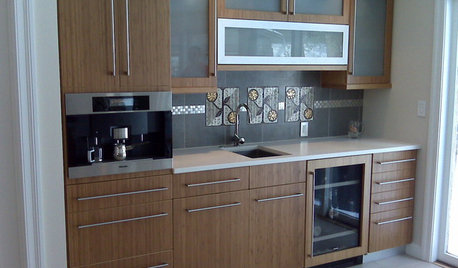
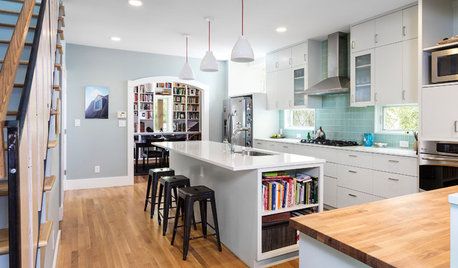
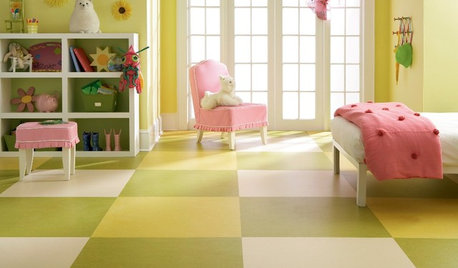
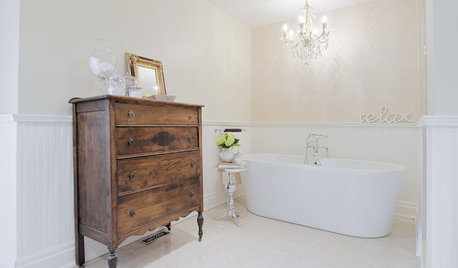
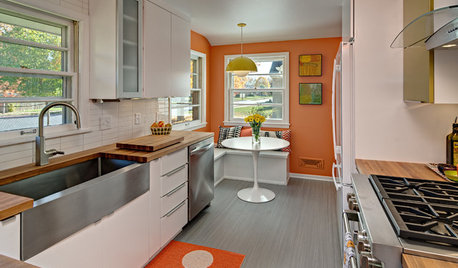
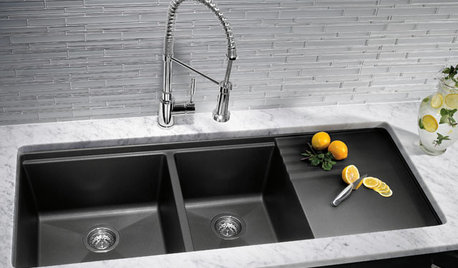
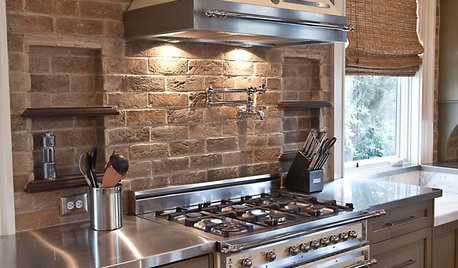
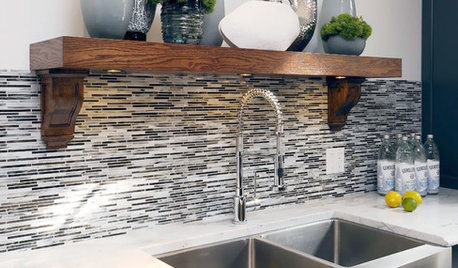
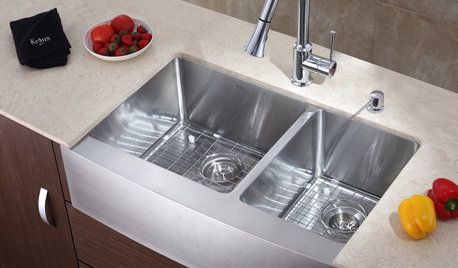







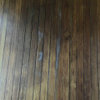
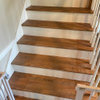
glennsfc